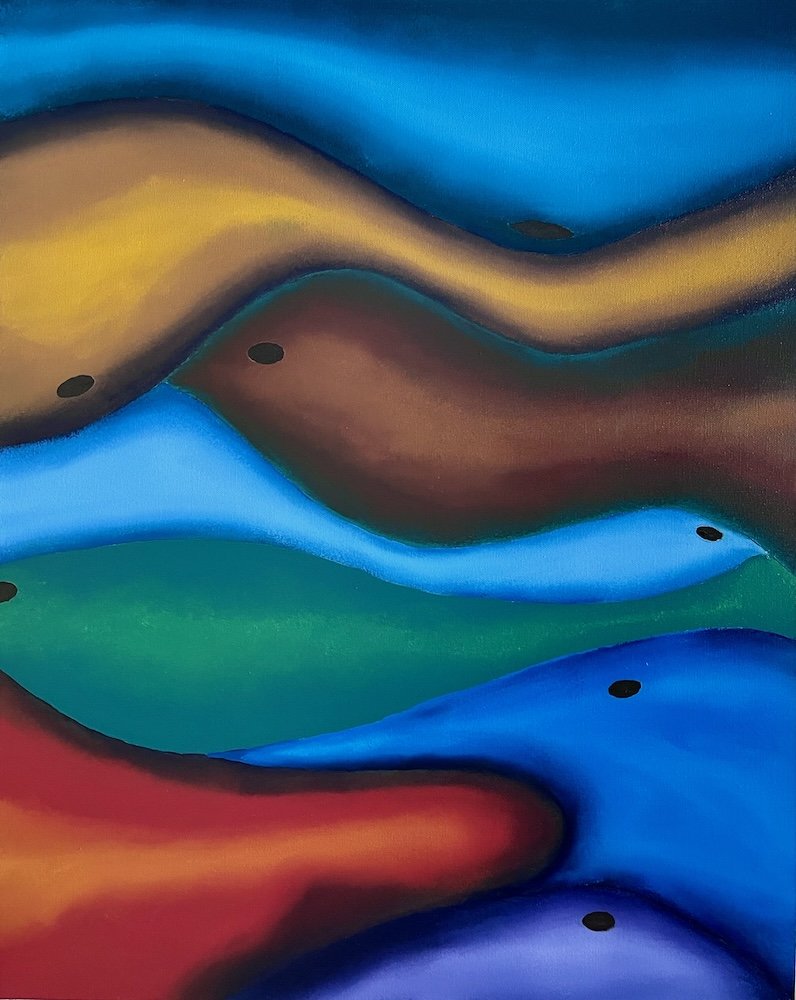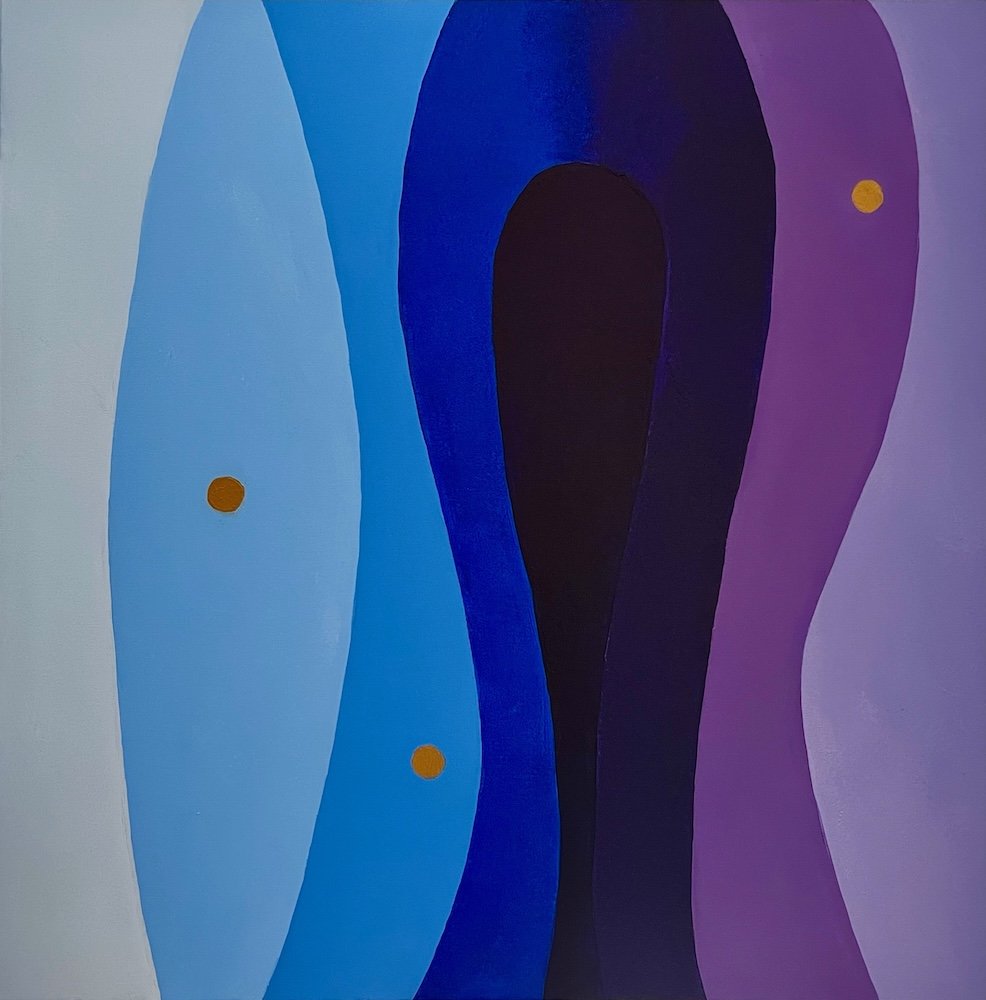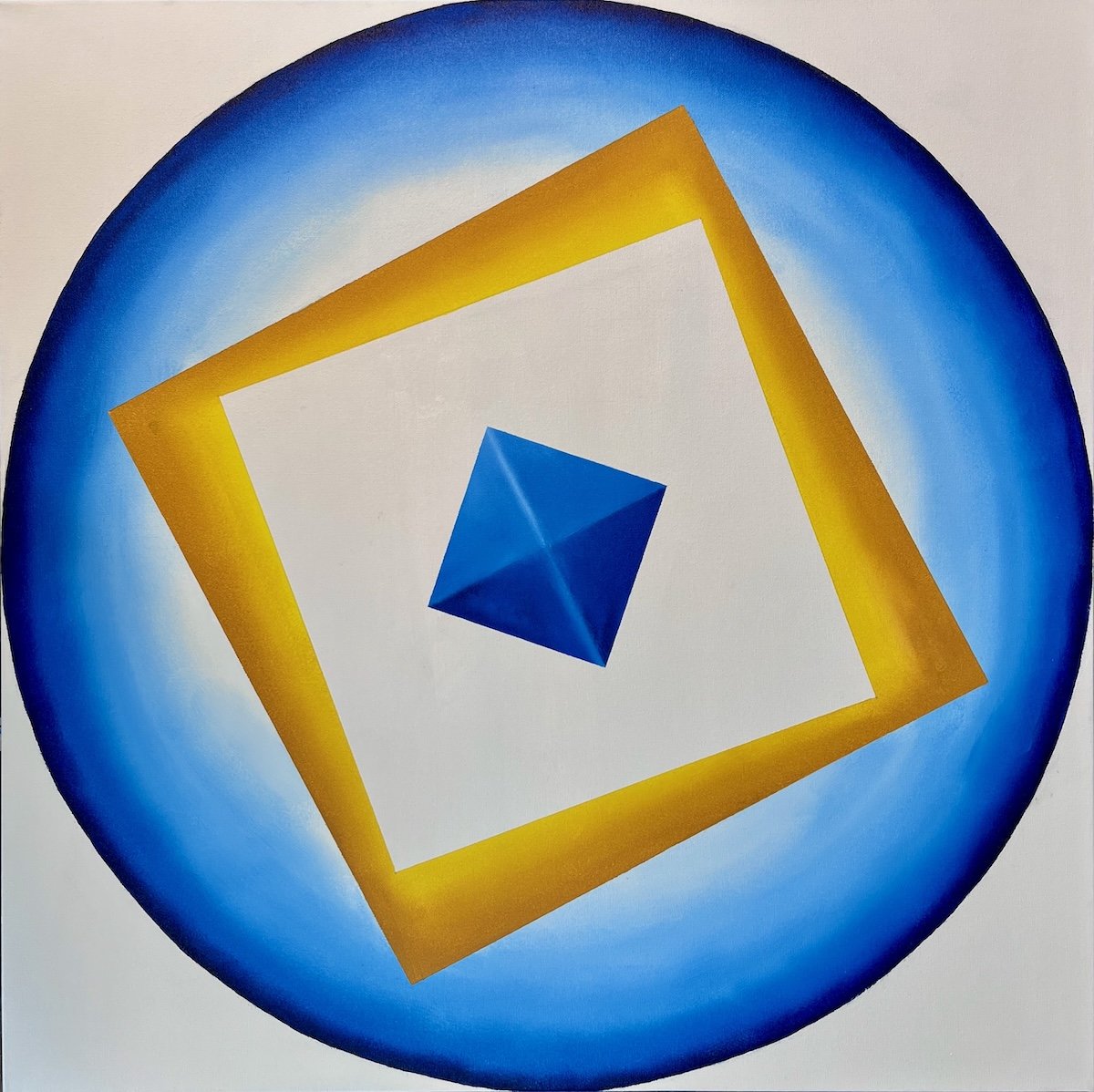The experience of blackness is more than having a brown body. I want to engage people in emotions and experiences that transcend the body. Abstract, non-objective imagery can convey and elicit feelings and understanding that are more universal and permanent than the transitory ways in which we often perceive humanity and nature. Its power is heightened because it does not preach; instead, it reinforces the uniqueness of the viewer’s interpretation.
Geometric abstraction forms the basis of many of my compositions. Geometric shapes interact with plain or carefully mottled backgrounds. Their relative slopes, colors, and heft imply movement or stasis, balance or imbalance, and even power relationships. I am especially inspired by non-objective “Suprematism” championed by Kazimir Malevich and his contemporaries in pre-Revolutionary Russia, and I am generally inspired by 20th-century hard-edge and color-field paintings.
Over the past two years, I’ve been pursuing color-rich biomorphic abstraction. These carefully crafted, curvilinear forms interact in visually playful ways, sometimes portrayed against wildly gestural backgrounds. The forms are quite abstract, some seeming more animal-like, some more plant-like. Viewers are more likely to uncover (within themselves, really) meaning and interaction when the forms seem organic – but are sufficiently vaguely rendered to prevent ascribing characteristics of any particular species. The paintings are also just plain fun to observe!
“The Impossibility of Knowing,” the title of one on-going series, refers to the strength of memory and imagination, compared to what is “real” or “observed.” In these paintings, a solid shape, figure, or silhouette interacts with its mirrored outline, against a shadowed background. Something that seems substantive is augmented with its mirror, shadow, future, or past. The interplay creates visual dynamism as each shape is pulled in its opposite direction, and interpretive dynamism as each object or figure interacts with its complement.





